In contrast to the galling thrips, there is a larger group of Phlaeothripinae on Australian Acacia that actually construct their own domiciles, rather than induce the plants to do this for them. They do this by glueing or sewing together two or more phyllodes to produce a small space within which they can breed and feed. [Crespi BJ, Morris DC & Mound LA, 2004. Evolution of ecological and behavioural diversity: Australian Acacia thrips as model organisms. Australian Biological Resources Study & Australian National Insect Collection, CSIRO, Canberra, Australia. 328pp].
Some species produce a glue-like product from their anus (eg. Lichanothrips pulchra) to fix two flattened phyllodes together face to face, whereas others use a silk-like product (eg. Dunatothrips aneurae) to hold together two or more narrow or needle-like phyllodes. At least two species are known to weave onto the surface of a phyllode a flattened tent from the silk that they secrete (Dunatothrips aulidis)(Mound LA & Morris DC, 2001. Domicile constructing phlaeothripine Thysanoptera from Acacia phyllodes in Australia: Dunatothrips Moulton and Sartrithrips gen.n., with a key to associated genera. Systematic Entomology 26: 401-419).
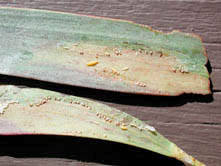
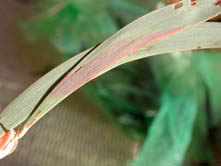
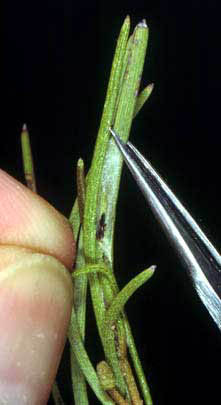
Dunatothrips aneurae domicile of webbed phyllodes.
Lichanothrips pulchra domicile of paired glued phyllodes on Acacia harpophylla.
Domiciles such as this are also invaded by kleptoparasites, such as species of the genera Xaniothrips, Crespithrips and Schwarzithrips. Adults in the first of these genera use the stout setae on their abdomen to drive out from the domicile those thrips that had originally produced it, by thrashing their tail and walking backwards (Mound LA & Morris DC. 1999. Abdominal armature in Xaniothrips species (Thysanoptera; Phlaeothripidae), kleptoparasites of domicile-producing thrips on Australian Acacia trees. Australian Journal of Entomology 38: 179-188).
Adults of the other two genera are presumed to use the spade-like tubercle on their antennae to effect entry into the domiciles they are known to usurp.
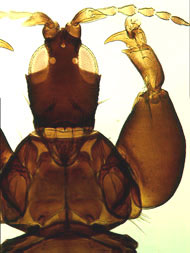 Schwarzithrips zammit |
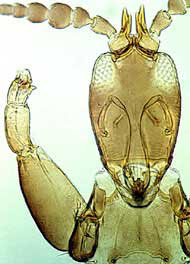 Crespithrips enigmaticus |
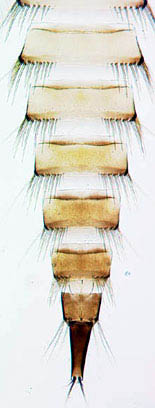 Xaniothrips xantes abdomen |
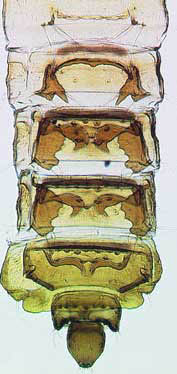 Dactylothrips marsupium abdomen |
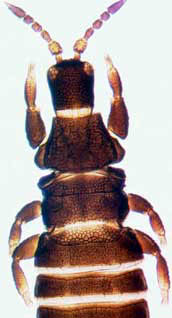 Corroboreethrips saigonus |